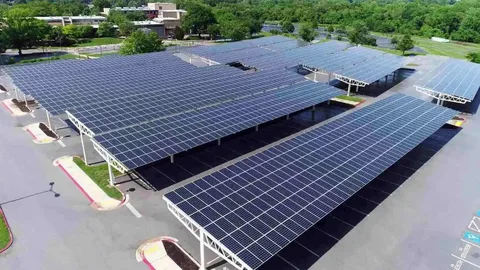Comparing Commercial Solar Systems: Monocrystalline vs Polycrystalline Panels
As businesses increasingly shift towards sustainable energy, choosing the right solar panel is a critical decision. When comparing commercial solar systems: monocrystalline vs polycrystalline panels, understanding their differences can help maximize efficiency, cost-effectiveness, and long-term benefits.
What Are Monocrystalline and Polycrystalline Panels?
Monocrystalline and polycrystalline panels are the two most common types of solar panels used in commercial solar systems.
- Monocrystalline panels are made from single-crystal silicon, giving them a uniform appearance and higher efficiency.
- Polycrystalline panels consist of multiple silicon crystals melted together, resulting in a speckled blue appearance.
Both types convert sunlight into electricity, but their manufacturing process influences performance and cost.
Efficiency and Performance
When comparing commercial solar systems: monocrystalline vs polycrystalline panels, efficiency is a key factor.
- Monocrystalline panels typically offer higher efficiency rates, often between 15-20%, due to the purity of the silicon used. This means they can generate more power from the same surface area.
- Polycrystalline panels have a slightly lower efficiency, usually ranging from 13-16%, but still provide reliable energy output for most commercial applications.
For businesses with limited roof space, monocrystalline panels are often the better choice, maximizing energy production per square foot.
Cost Considerations
Cost is another important factor in the comparison of commercial solar systems.
- Polycrystalline panels tend to be less expensive due to simpler manufacturing processes, making them attractive for projects with tight budgets.
- Monocrystalline panels usually come at a premium but can offer better long-term value thanks to higher efficiency and often longer warranties.
Choosing between the two depends on the specific energy needs and budget constraints of the commercial project.
Durability and Lifespan
Both monocrystalline and polycrystalline panels are built to withstand harsh weather conditions and last 25 years or more.
- Monocrystalline panels typically have a slightly longer lifespan and may degrade slower over time.
- Polycrystalline panels have improved significantly in durability but may have a marginally shorter useful life.
Which Is Better for Commercial Solar Systems?
Ultimately, when comparing commercial solar systems: monocrystalline vs polycrystalline panels, the best option depends on factors such as available space, budget, and energy goals.
- Choose monocrystalline panels for higher efficiency and limited installation space.
- Opt for polycrystalline panels if upfront cost is a priority and space is not constrained.
Both technologies have proven effective in reducing energy costs and carbon footprints for commercial users.

